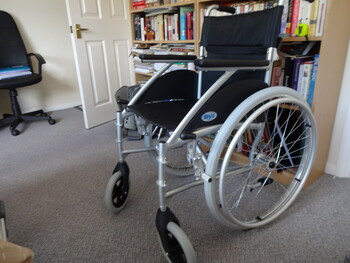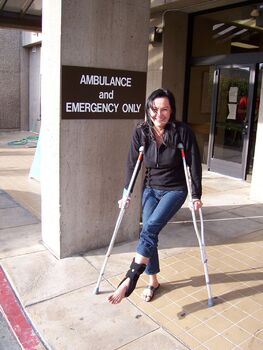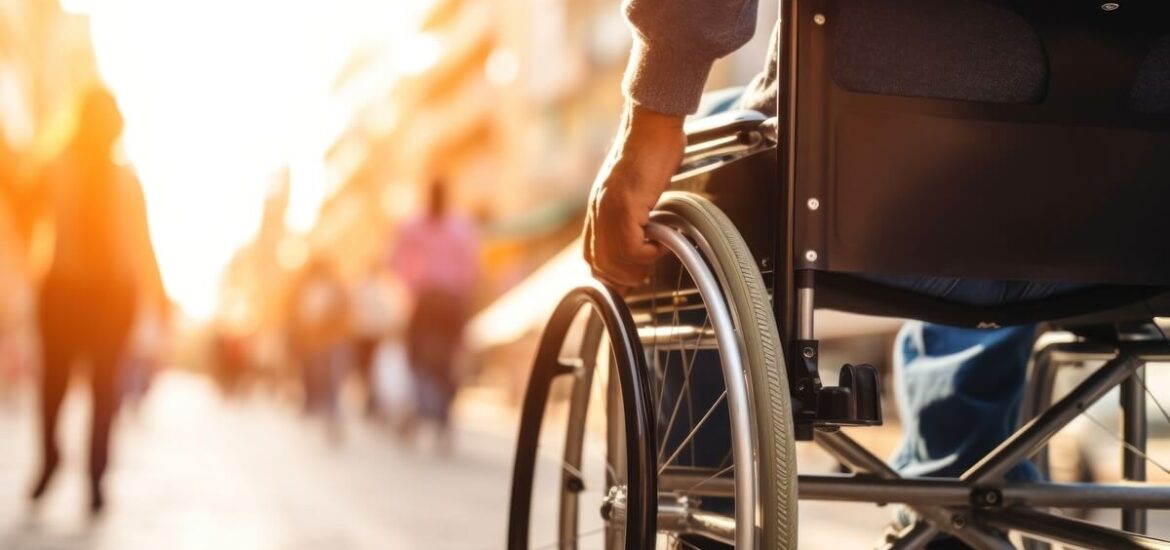Mobility aids are invaluable tools that enhance the quality of life for individuals with mobility challenges. From the elderly to those with temporary injuries or long-term disabilities, the use of mobility aids allows for increased independence and improved mobility. In this comprehensive guide, we’ll delve into the world of mobility aids, exploring the various types available and their applications in helping individuals regain their freedom of movement.
 Understanding Mobility Aids
Understanding Mobility Aids
Mobility aids encompass a wide range of devices designed to assist people with various degrees of mobility impairment.
These aids are essential for providing support, stability, and improved mobility, whether indoors or outdoors.
They cater to a diverse set of needs and medical conditions, offering individuals the opportunity to lead more active and independent lives.
Types of Mobility Aids
- Canes:
- Standard Canes: These single-point canes provide balance and support for those with mild mobility challenges.
- Quad Canes: Featuring a base with four prongs, quad canes offer enhanced stability and can support individuals with a greater degree of mobility impairment.
- Folding Canes: Folding canes are highly portable and can be easily stashed away when not in use, making them ideal for occasional support.
- Crutches:
- Underarm Crutches: These crutches are placed under the arms and are often used for temporary injuries or post-surgery recovery.
- Forearm Crutches (Lofstrand Crutches): Forearm crutches are equipped with cuffs that wrap around the forearms, offering greater stability and control.
- Walkers:
- Standard Walkers: These walkers are equipped with four legs and provide support for those with balance issues. They are ideal for indoor use.
- Rolling Walkers (Rollators): Rolling walkers are equipped with wheels for increased mobility and are suitable for both indoor and outdoor use. They often come with a seat and storage pouch.
- Knee Walkers: Knee walkers are a specialized type of mobility aid designed for individuals with foot or ankle injuries. They feature a cushioned knee pad and wheels for ease of movement.
- Wheelchairs:
- Manual Wheelchairs: Propelled by the user or a caregiver, manual wheelchairs come in various styles, including standard, lightweight, and sport chairs.
- Power Wheelchairs: Power wheelchairs are motorized and operated using a joystick or control panel, providing independence to individuals with limited upper body strength.
- Transport Wheelchairs: Lightweight and foldable, transport wheelchairs are designed for easy transport and are often pushed by a caregiver.
- Mobility Scooters:
- Mobility scooters are electrically powered and designed for outdoor use. They offer a comfortable and convenient mode of transportation for those with mobility issues.
- Orthopedic Braces and Supports:
- These include knee braces, ankle supports, wrist splints, and more. They provide stability and help with pain management for various joint and musculoskeletal conditions.
- Orthopedic Shoes and Insoles:
- Specialized orthopedic shoes and insoles are designed to support and alleviate foot-related mobility issues and conditions like plantar fasciitis and diabetes.
- Stairlifts:
- Stairlifts are devices that assist individuals with mobility issues in navigating staircases. They are commonly used in homes with multiple levels.
- Bath and Shower Aids:
- These aids include shower chairs, bath benches, and grab bars to enhance safety and accessibility in the bathroom.
- Home Modification Aids:
- These modifications may include ramps, handrails, and widened doorways to make homes more accessible to individuals with mobility challenges.
- Orthopedic Walkers (Boots):
- Orthopedic walkers, also known as walking boots, are used to immobilize the foot or ankle during the healing process of injuries or surgeries.
Applications of Mobility Aids
Mobility aids cater to a wide range of individuals with diverse mobility challenges:
- Elderly Individuals:
- Many elderly individuals experience reduced mobility due to age-related factors. Mobility aids like canes, walkers, and rollators can help them maintain their independence.
- Individuals with Disabilities:
- Individuals with permanent disabilities, such as spinal cord injuries or neuromuscular disorders, often use wheelchairs and mobility scooters to enhance their mobility and daily activities.
- Temporary Injuries:
- People with temporary injuries, like a broken leg or sprained ankle, may require crutches, knee walkers, or walking boots to assist during the recovery process.
- Post-Surgery Recovery:
- Following surgeries, orthopedic braces, walkers, and supports can provide stability and support during the healing phase.
- Arthritis and Joint Conditions:
- Those with arthritis or joint conditions benefit from mobility aids like canes, orthopedic shoes, and knee braces to manage pain and improve mobility.
- Cerebral Palsy and Muscular Dystrophy:
- Individuals with conditions like cerebral palsy and muscular dystrophy may use wheelchairs and orthopedic braces to enhance their mobility and independence.
Selecting the Right Mobility Aid
 Choosing the appropriate mobility aid depends on individual needs and mobility challenges. Here are some key considerations:
Choosing the appropriate mobility aid depends on individual needs and mobility challenges. Here are some key considerations:
- Consult with a Healthcare Professional:
- Seek guidance from a healthcare provider or physical therapist to determine the most suitable mobility aid based on your specific condition and needs.
- Trial and Testing:
- Test various mobility aids to find the one that provides the best support and comfort.
- Safety and Stability:
- Ensure that the chosen mobility aid offers stability and safety, reducing the risk of falls or further injury.
- Portability and Storage:
- Consider the mobility aid’s portability and storage requirements, especially if you need to transport it frequently.
- Maintenance and Durability:
- Evaluate the maintenance and durability of the mobility aid to ensure it can withstand daily use.
Conclusion
Mobility aids have transformed the lives of countless individuals with mobility challenges, providing the freedom to move, participate in daily activities, and maintain independence. These aids come in various forms, from canes and crutches to wheelchairs, mobility scooters, and specialized orthopedic supports. By selecting the right mobility aid and working with healthcare professionals, individuals can regain their mobility, improve their quality of life, and continue to participate actively in their communities.

